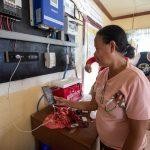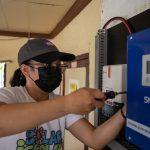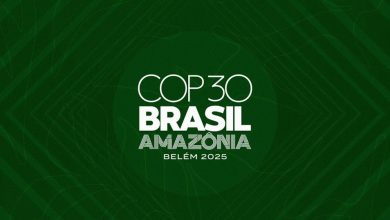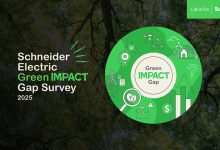TACLOBAN, PHILIPPINES — Residents of Barangay San Agustin in Limasawa Island, Southern Leyte can now enjoy lighting and power after a community solar charging system was installed in their island town last week, two months after Typhoon Rai (Odette) devastated the island. Residents of Suva, the capital of Fiji, likewise received a similar set-up as Fijians trained by Supertyphoon Haiyan (Yolanda) survivors assembled and installed their own system last week.
Fiji and the Philippines continue to face storms supercharged by warming seas and creeping climate impacts, but survivor communities are paying it forward by reaching out across the ocean to empower other survivors by lighting up communities across the Pacific.

Two solar charging systems were set up by the Solar Scholars’ initiative which was established shortly after Haiyan slammed into the Philippines. The modular power stations are the outcome of the Solar Scholars training in Tacloban, Leyte and Suva, Fiji held online from February 22 to 24, where community representatives from Samar and Leyte – supported by the Institute for Climate and Sustainable Cities (ICSC) – trained representatives from the climate group 350.org Pacific and the Christian organization Pacific Conference of Churches (PCC). A 300-watt solar charging system set up in Suva was installed in the PCC head office for public use.
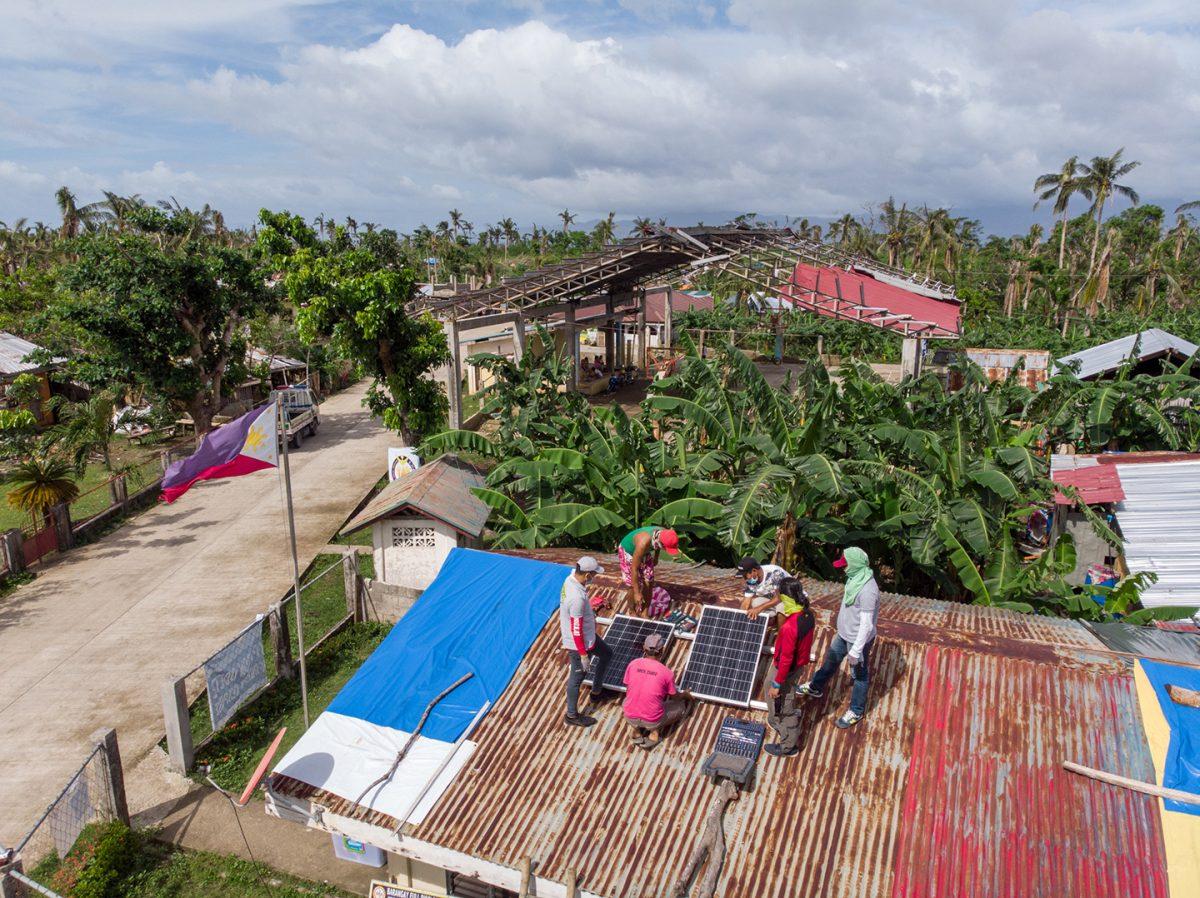
ICSC launched the Solar Scholars initiative in 2015 to enable community members, local government officials, and civil society representatives to integrate renewable energy into disaster risk reduction and community development programs. There are now over 400 Solar Scholars across the Philippines.
“We can accelerate the energy transition in more islands by building new and far more locally responsive renewable energy systems that are resilient to extreme weather events and which can be maintained by community members themselves, especially women. Inaction is everyone’s adversary today as we face the rapidly closing window of opportunity to secure a future where our communities can thrive despite the climate crisis,” said ICSC associate for community resilience Arturo Tahup.
“Solar Scholars and community-led power systems help promote community leadership and ownership of accessible, affordable, and sustainable renewable energy services. It’s been an unmistakable joy to witness frontline communities in the Philippines working to help enable their sisters and brothers in Fiji,” he added.
Apart from the online mentoring and live technical training sessions, community Solar Scholars prepared an instructional video by putting up a 200-watt solar charging system to help their Fijian participants. Jude Capila Elona, a Solar Scholar and Typhoon Haiyan survivor with a background in electrical engineering, helped assemble the 200-watt charging system, which was then turned over to residents of Limasawa Island. Fourteen barangay officials and workers, including eight women, were trained to use and maintain the community solar charging system.
“Malaking tulong itong solar charging systems lalo na sa mga maliliit na barangay at iyong iba na malayo sa kuryente. Kung may disaster, kung may bagyo ulit, kung may ganitong system, may pagkukunan na ng kuryente dito (These solar charging systems are of great help especially for small communities and far flung areas lacking access to electricity. With this system, we now have access to electricity when the next storm hits),” said Marie Ann Dagohoy-Kangleon, head of Limasawa’s disaster risk reduction management office, during the turnover of the solar charging system in Barangay San Agustin last March 1 to 2.
When typhoon Odette hit, the National Power Corporation Small Utilities Group’s (NAPOCOR-SPUG) first solar-diesel hybrid plant that powered Limasawa incurred considerable damages, resulting in an island-wide blackout. While electricity has been restored in parts of barangays Cabulihan and Triana by the Southern Leyte Electric Cooperative (SOLECO), a bigger part of the island covering barangays Magallanes, Lugsungan, San Francisco and San Agustin remain without power.
Fiji, an archipelagic country in the South Pacific, has been hit by Category 5 storms in recent years – Cyclone Winston in 2016, the deadliest in the country since 1979, and Cyclone Yasa in 2020, the most powerful storm recorded in the Pacific region that year. Most recently, Cyclone Cody slammed Fiji in January 2022, taking the life of one person and causing major flood damages and the evacuation of around 2,000 people.
“Over the years, as we faced the same destruction in the face of intense cyclones, we’ve learned a lot and we were able to equip ourselves. It has been a continuous phase of rebuilding. This training has been a light at the end of the tunnel. We can actually give hope to our people,” said 350 Pacific Organizer George Nacewa, one of the new Solar Scholars in Fiji.
Climate change intensifies existing vulnerabilities and inequalities – new UN report
The latest report launched by the Intergovernmental Panel on Climate Change (IPCC), which is the contribution of Working Group II (WG2) to the Sixth Assessment Report (AR6), showed the Philippines is projected to experience decreased agricultural and fisheries productivity, major public health risks, climate-induced migration and displacement, and decreasing but intensifying typhoons. The report also identified socio-economic impacts of climate change, hitting marginalized communities the hardest.
Limasawa Island is a sixth-class municipality in Southern Leyte with over 6,000 residents across 1,364 households. Typhoon Odette struck the town in December 2021, claiming the lives of 407 individuals and leaving at least 1,433 houses totally damaged.
As an island community, the three main livelihoods of residents – fishing, coconut farming, and tourism – were also heavily impacted by typhoon Odette. Most of the fishing boats were washed away or totally damaged. The local government estimates that around 80 to 90 percent of coconut trees were badly affected by the typhoon. Strong waves also washed away half of the island’s Triana pier, a major point of entry for local and foreign tourists.
Residents have observed the loss of around five to ten meters in their coastline over the last 30 years, with sea levels during high tide now reaching settlements that previously remained untouched. Limasawa’s case highlights risks associated with slow onset impacts of climate change such as rising seas, which puts coastal communities at high risk from surges brought by storms, leading to displacement of residents.
The IPCC report stressed the urgency of establishing actually resilient energy systems to “avoid the risk of unsustainable energy growth in developing Asia,” a strategy that “requires strategic planning consistent with long term climate projections, impact and adaptation.”


